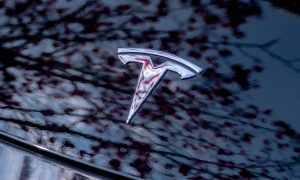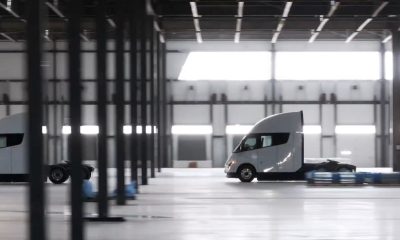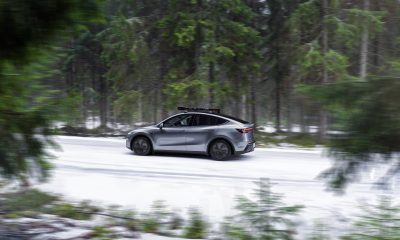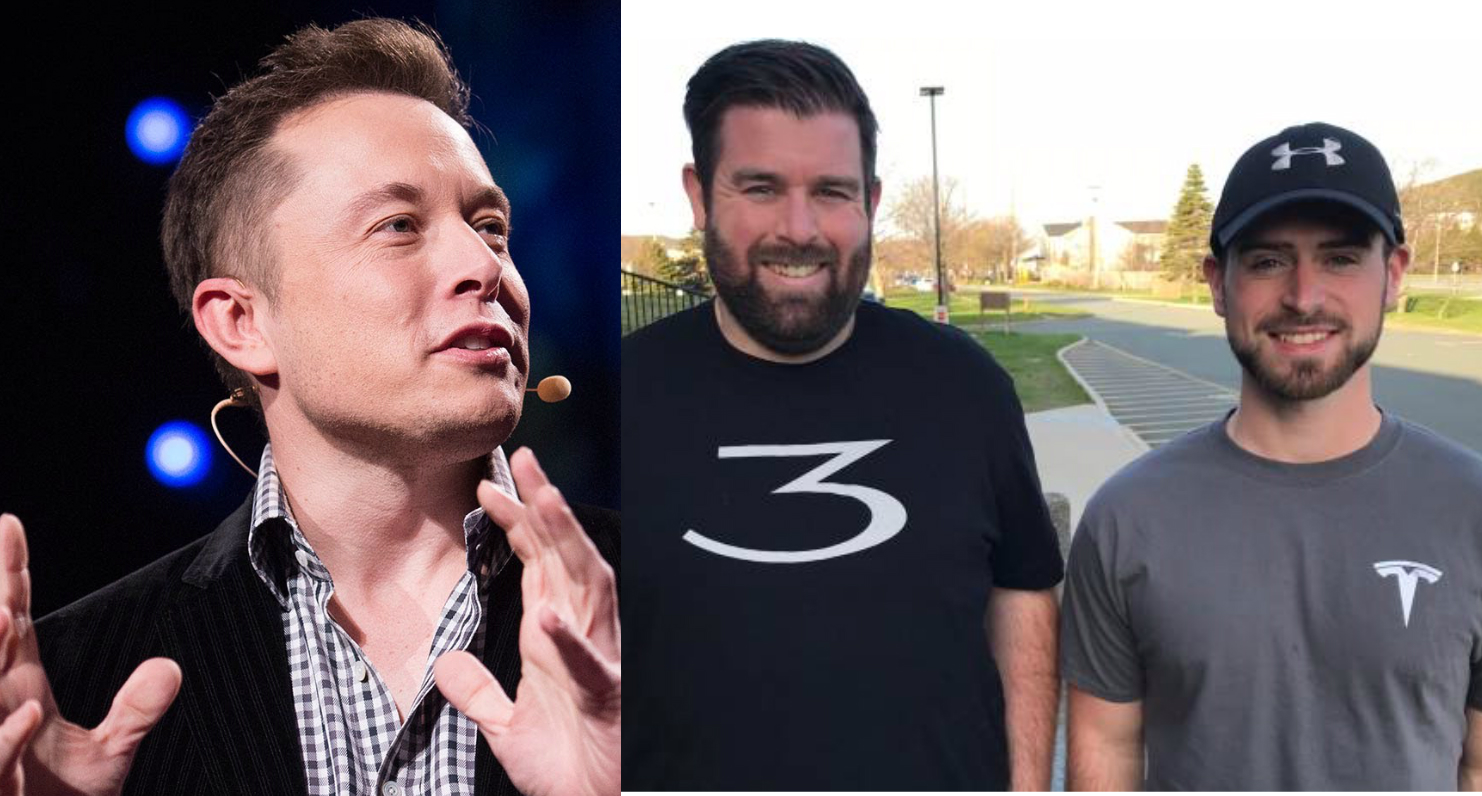

Lifestyle
Elon Musk hires Tesla interns who helped solve Model 3 production issues
Mark Comeau and Matthew Lane from the Memorial University of Newfoundland were serving as interns at Tesla when they spotted a point for improvement in the Model 3 production line. Less than two months later, the pair were personally invited by Elon Musk to join the electric car maker.
Matthew and Mark were no strangers to Musk’s projects. The pair had worked on the SpaceX Hyperloop competition in the past, and this year, they are returning to help judge the 2018 competition in July. The engineering students started their Tesla internship in January, where they worked at both the Fremont factory in California and at the Gigafactory in Nevada.
In an interview at CBC Radio’s St. John’s Morning Show, the pair described the series of events that transpired which eventually led to their hiring. According to Matthew, it all started when he and Mark came up with a solution to a gating problem in the Model 3 line.

Engineering students Mark Comeau and Matthew Lane were personally hired by Elon Musk after the pair solved a problem in the Model 3’s production line. [Credit: Paula Gale/CBC]
“Essentially, it was a gating problem with the Model 3 production ramp. What had happened was we saw an opportunity to solve the problem. We came up with our own idea, and we actually sort of crashed the meeting with Elon himself and presented the idea. And, after speaking with him and one of his VPs, Doug Field, they essentially said ‘This is a good idea, but here’s the problem we are facing right now, so you guys go talk with us.’ And it snowballed from there,” he said.
Much to the pair’s surprise, Musk opted to follow through on their suggestions. Matthew and Mark worked on their solution to the Model 3 line’s gating problem, and not long after bringing things online, they were eventually called to the Gigafactory to address a new set of challenges.
“So about a month and a half after that, we worked on this issue, brought things online. And then, literally at 10 a.m. Monday morning, the week after we’re finished, we received a message saying ‘Hey, head to Nevada to the Gigafactory.’ And, a five-hour car drive later, we arrived in Nevada, with a whole new situation and a whole new set of problems to address,” Mark said.
It was after they were able to address the issues in Gigafactory 1 that Musk suggested that they stay with the company. Mark elaborated on their encounter with Elon Musk at the Nevada factory.
“Elon is the type of CEO that is actually hands-on in the factory floor. He’s not one of those that sits on the ivory tower and just gets reports. He’s actually on the line, seeing the issues himself in person, and seeing what contributions people are making, and what the issues are. He doesn’t like to hear things second-hand. He likes everything first-hand knowledge.
“So this issue had caused some delays with the production, so of course it was one thing that was always on his radar, and once we had figured it out and got it up and running reliably, he came by, and he had us walk through it. It’s probably one of the most unnerving experiences ever, because he’s the CEO of the company and here we are, just two interns. And, he’s basically like ‘Yep, you’ve got to stay.’”
Mark is now hired as a special projects engineer for Tesla. Matthew will be returning to school for the summer semester, but he’ll be back at the electric car maker for the fall. The pair sees themselves as firefighters, deployed to areas in the company where there are issues that await solutions.
Ultimately, the story of how Mark Comeau and Matthew Lane got personally hired by Elon Musk is a testament to Tesla’s practice of allowing communication to travel through the shortest path necessary. The pair, after all, were engineering interns, and in any other company setting, it would have taken a lot of red tape before the pair would have been able to propose their solution to the CEO. This particular culture was highlighted by Musk in a leaked email last month, when he specifically stated that communication through “chain of command” should never be done.
“Communication should travel via the shortest path necessary to get the job done, not through the ‘chain of command.’ A major source of issues is poor communication between depts. The way to solve this is allow free flow of information between all levels. If, in order to get something done between depts, an individual contributor has to talk to their manager, who talks to a director, who talks to a VP, who talks to another VP, who talks to a director, who talks to a manager, who talks to someone doing the actual work, then super dumb things will happen. It must be ok for people to talk directly and just make the right thing happen,” Musk wrote.
Elon Musk
X account with 184 followers inadvertently saves US space program amid Musk-Trump row
Needless to say, the X user has far more than 184 followers today after his level-headed feat.
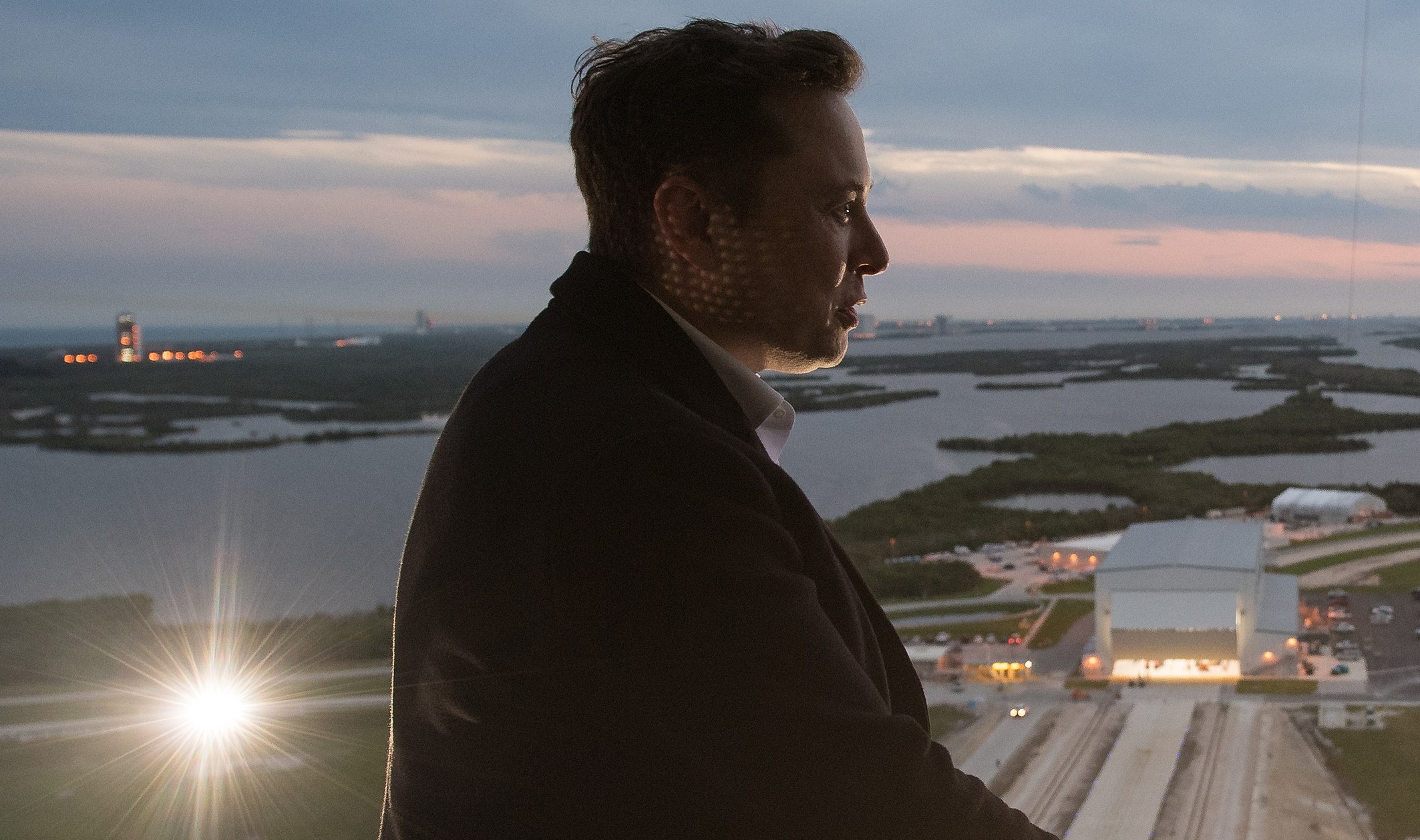
An X user with 184 followers has become the unlikely hero of the United States’ space program by effectively de-escalating a row between SpaceX CEO Elon Musk and President Donald Trump on social media.
Needless to say, the X user has far more than 184 followers today after his level-headed feat.
A Near Fall
During Elon Musk and Donald Trump’s fallout last week, the U.S. President stated in a post on Truth Social that a good way for the United States government to save money would be to terminate subsidies and contracts from the CEO’s companies. Musk responded to Trump’s post by stating that SpaceX will start decommissioning its Dragon spacecraft immediately.
Musk’s comment was received with shock among the space community, partly because the U.S. space program is currently reliant on SpaceX to send supplies and astronauts to the International Space Station (ISS). Without Dragon, the United States will likely have to utilize Russia’s Soyuz for the same services—at a significantly higher price.
X User to the Rescue
It was evident among X users that Musk’s comments about Dragon being decommissioned were posted while emotions were high. It was then no surprise that an X account with 184 followers, @Fab25june, commented on Musk’s post, urging the CEO to rethink his decision. “This is a shame this back and forth. You are both better than this. Cool off and take a step back for a couple days,” the X user wrote in a reply.
Much to the social media platform’s surprise, Musk responded to the user. Even more surprising, the CEO stated that SpaceX would not be decommissioning Dragon after all. “Good advice. Ok, we won’t decommission Dragon,” Musk wrote in a post on X.
Not Planned, But Welcomed
The X user’s comment and Musk’s response were received extremely well by social media users, many of whom noted that @Fab25june’s X comment effectively saved the U.S. space program. In a follow-up comment, the X user, who has over 9,100 followers as of writing, stated that he did not really plan on being a mediator between Musk and Trump.
“Elon Musk replied to me. Somehow, I became the accidental peace broker between two billionaires. I didn’t plan this. I was just being me. Two great minds can do wonders. Sometimes, all it takes is a breather. Grateful for every like, DM, and new follow. Life’s weird. The internet’s weirder. Let’s ride. (Manifesting peace… and maybe a Model Y.)” the X user wrote.
Lifestyle
Tesla Cybertruck takes a bump from epic failing Dodge Charger
The Cybertruck seemed unharmed by the charging Charger.
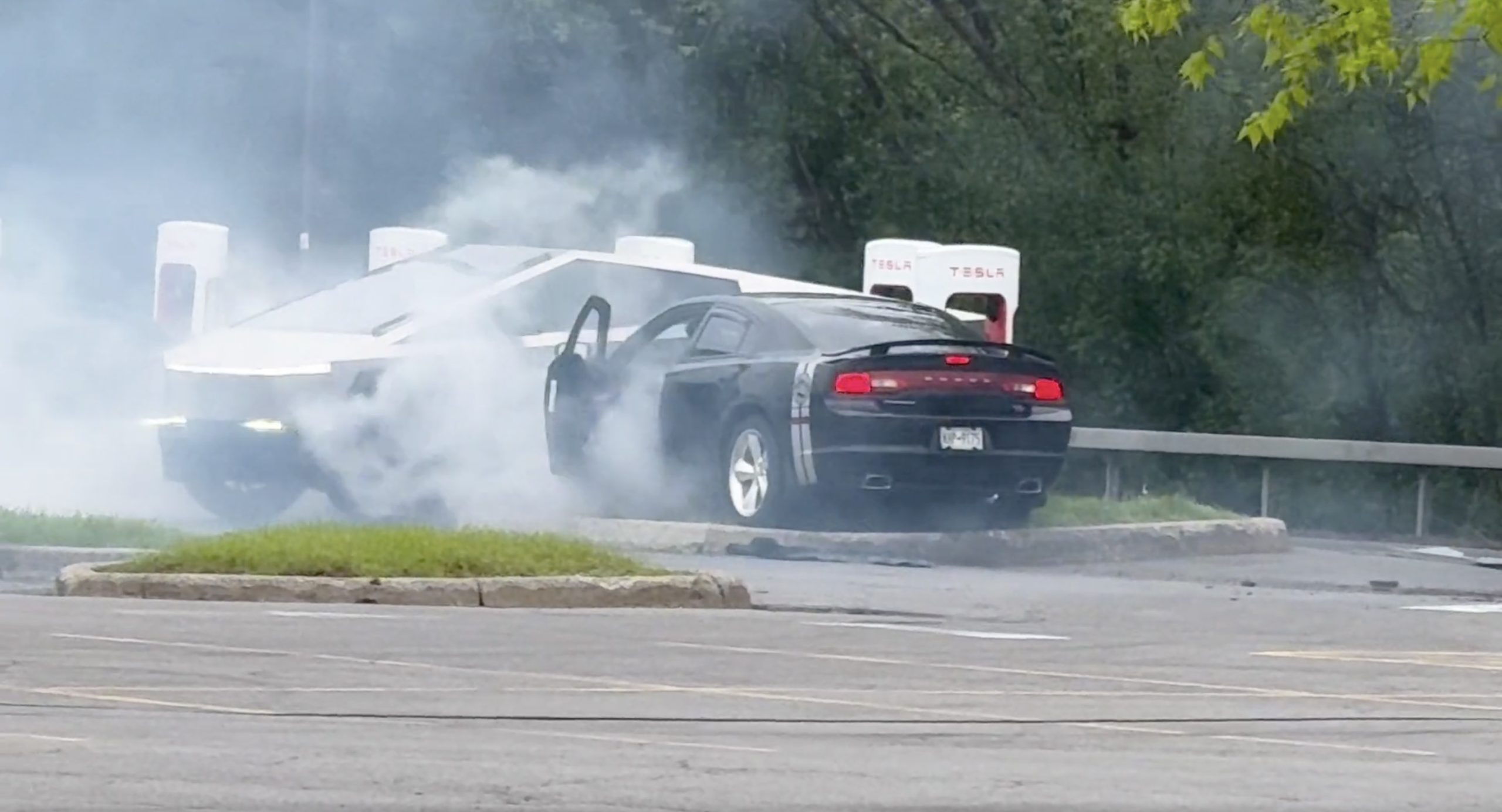
There comes a time in a driver’s life when one is faced with one’s limitations. For the driver of a Dodge Charger, this time came when he lost control and crashed into a Tesla Cybertruck–an absolute epic fail.
A video of the rather unfortunate incident was shared on the r/TeslaLounge subreddit.
Charging Charger Fails
As could be seen in the video, which was posted on the subreddit by Model Y owner u/Hammer_of_something, a group of teens in a Dodge Charger decided to do some burnouts at a Tesla Supercharger. Unfortunately, the driver of the Charger failed in his burnout or donut attempt, resulting in the mopar sedan going over a curb and bumping a charging Cybertruck.
Ironically, the Dodge Charger seemed to have been parked at a Supercharger stall before its driver decided to perform the failed stunt. This suggests that the vehicle was likely ICE-ing a charging stall before it had its epic fail moment. Amusingly enough, the subreddit member noted that the Cybertruck did not seem like it took any damage at all despite its bump. The Charger, however, seemed like it ran into some trouble after crashing into the truck.
Alleged Aftermath
As per the the r/TeslaLounge subreddit member, the Cybertruck owner came rushing out to his vehicle after the Dodge Charger crashed into it. The Model Y owner then sent over the full video of the incident, which clearly showed the Charger attempting a burnout, failing, and bumping into the Cybertruck. The Cybertruck owner likely appreciated the video, in part because it showed the driver of the Dodge Charger absolutely freaking out after the incident.
The Cybertruck is not an impregnable vehicle, but it can take bumps pretty well thanks to its thick stainless steel body. Based on this video, it appears that the Cybertruck can even take bumps from a charging Charger, all while chilling and charging at a Supercharger. As for the teens in the Dodge, they likely had to provide a long explanation to authorities after the incident, since the cops were called to the location.
Lifestyle
Anti-Elon Musk group crushes Tesla Model 3 with Sherman tank–with unexpected results
Ironically enough, the group’s video ended up highlighting something very positive for Tesla.
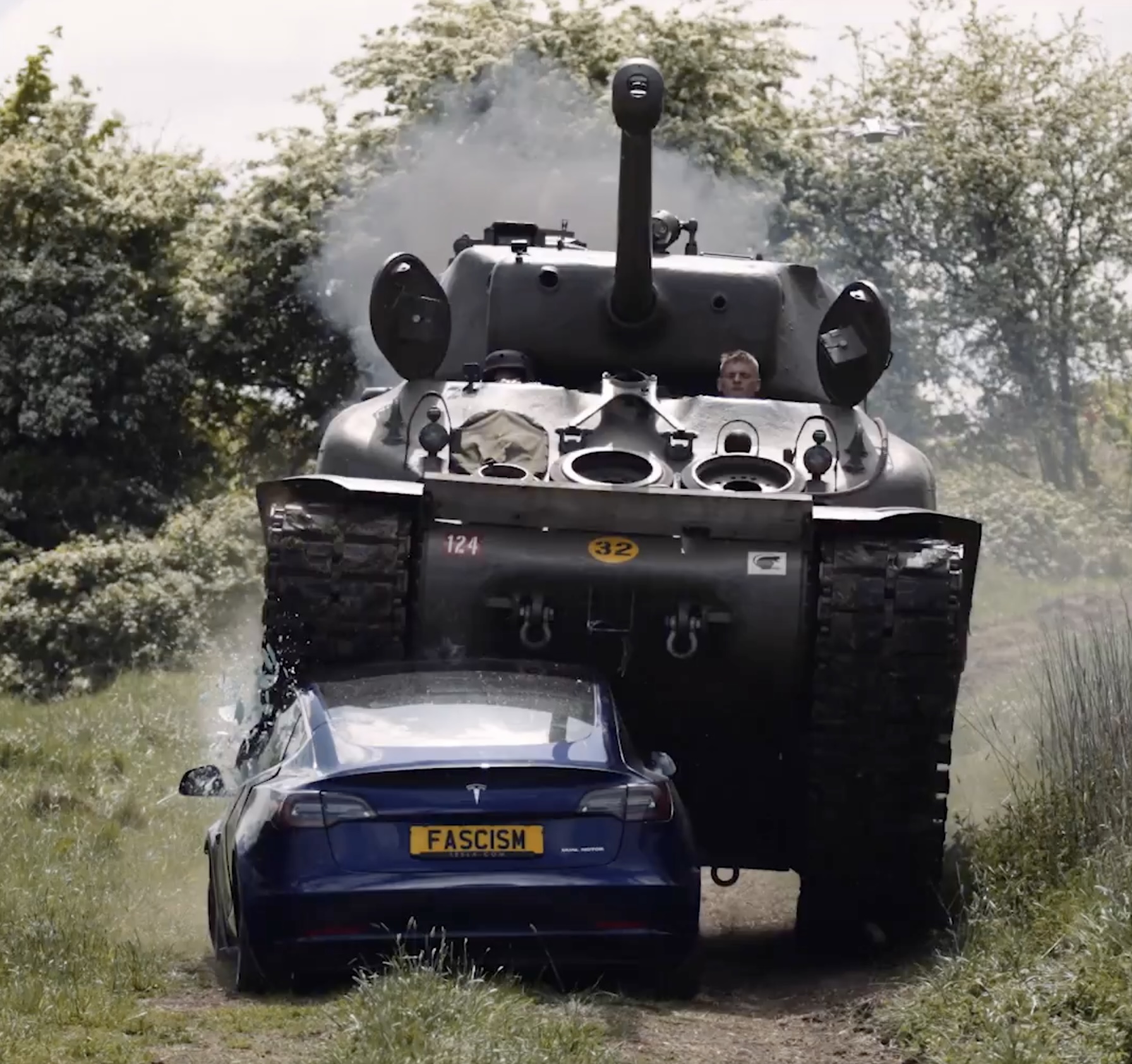
Anti-Elon Musk protesters and critics tend to show their disdain for the CEO in various ways, but a recent video from political action group Led By Donkeys definitely takes the cake when it comes to creativity.
Ironially enough, the group’s video also ended up highlighting something very positive for Tesla.
Tank vs. Tesla
In its video, Led By Donkeys featured Ken Turner, a 98-year-old veteran who served in the British army during World War II. The veteran stated that Elon Musk, the richest man in the world, is “using his immense power to support the far-right in Europe, and his money comes from Tesla cars.”
He also noted that he had a message for the Tesla CEO: “We’ve crushed fascism before and we’ll crush it again.” To emphasize his point, the veteran proceeded to drive a Sherman tank over a blue Tesla Model 3 sedan, which, of course, had a plate that read “Fascism.”
The heavy tank crushed the Model 3’s glass roof and windows, much to the delight of Led By Donkeys’ commenters on its official YouTube channel. But at the end of it all, the aftermath of the anti-Elon Musk demonstration ended up showcasing something positive for the electric vehicle maker.
Tesla Model 3 Tanks the Tank?
As could be seen from the wreckage of the Tesla Model 3 after its Sherman encounter, only the glass roof and windows of the all-electric sedan were crushed. Looking at the wreckage of the Model 3, it seemed like its doors could still be opened, and everything on its lower section looked intact.
Considering that a standard M4 Sherman weighs about 66,800 to 84,000 pounds, the Model 3 actually weathered the tank’s assault really well. Granted, the vehicle’s suspension height before the political action group’s demonstration suggests that the Model 3’s high voltage battery had been removed beforehand. But even if it hadn’t been taken off, it seemed like the vehicle’s battery would have survived the heavy ordeal without much incident.
This was highlighted in comments from users on social media platform X, many of whom noted that a person in the Model 3 could very well have survived the ordeal with the Sherman. And that, ultimately, just speaks to the safety of Tesla’s vehicles. There is a reason why Teslas consistently rank among the safest cars on the road, after all.
-

 Elon Musk2 weeks ago
Elon Musk2 weeks agoTesla investors will be shocked by Jim Cramer’s latest assessment
-

 Elon Musk2 days ago
Elon Musk2 days agoxAI launches Grok 4 with new $300/month SuperGrok Heavy subscription
-

 Elon Musk4 days ago
Elon Musk4 days agoElon Musk confirms Grok 4 launch on July 9 with livestream event
-

 News1 week ago
News1 week agoTesla Model 3 ranks as the safest new car in Europe for 2025, per Euro NCAP tests
-

 Elon Musk2 weeks ago
Elon Musk2 weeks agoA Tesla just delivered itself to a customer autonomously, Elon Musk confirms
-

 Elon Musk1 week ago
Elon Musk1 week agoxAI’s Memphis data center receives air permit despite community criticism
-

 News2 weeks ago
News2 weeks agoXiaomi CEO congratulates Tesla on first FSD delivery: “We have to continue learning!”
-

 Investor's Corner2 weeks ago
Investor's Corner2 weeks agoTesla gets $475 price target from Benchmark amid initial Robotaxi rollout



